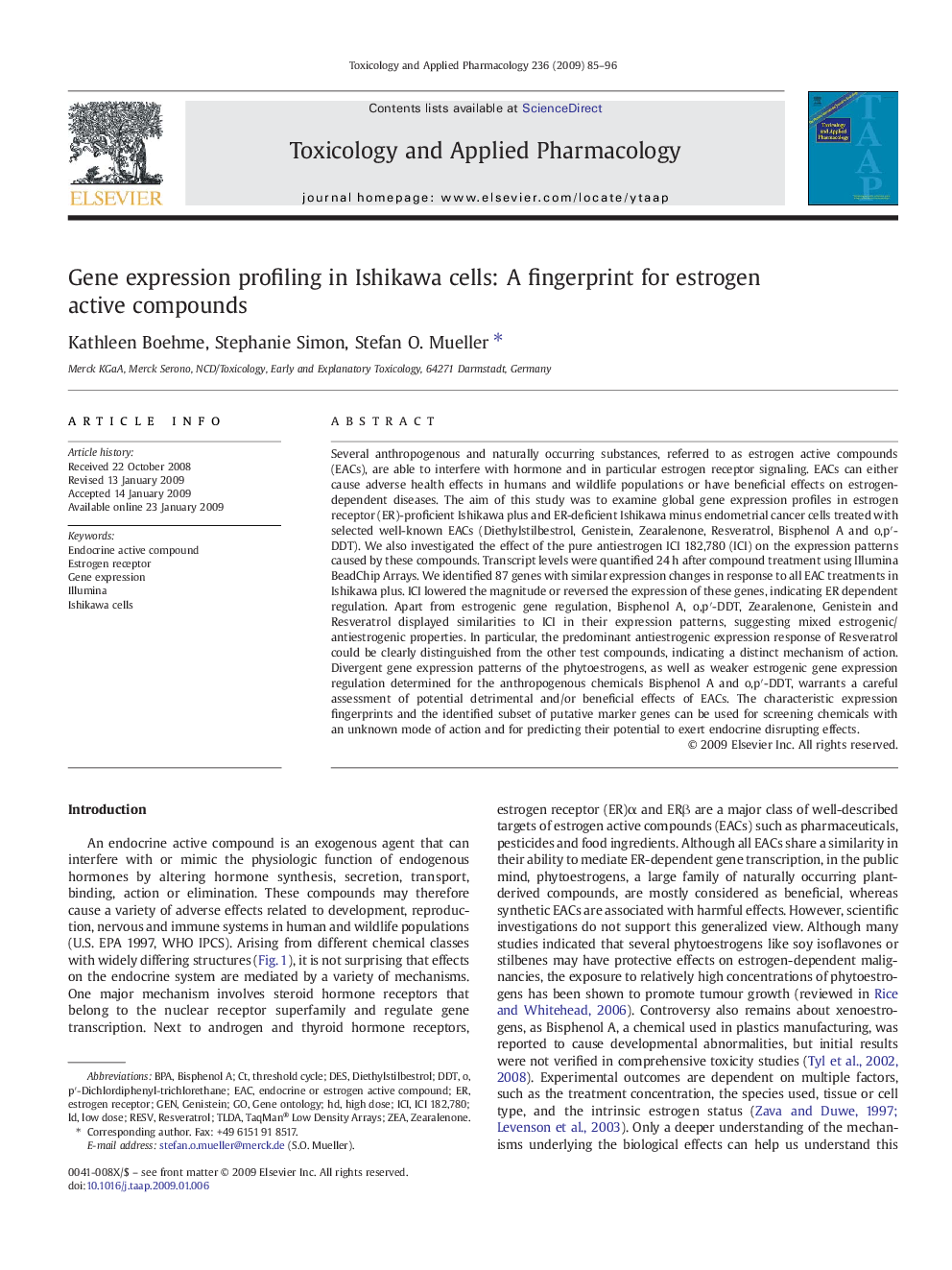| Article ID | Journal | Published Year | Pages | File Type |
|---|---|---|---|---|
| 2570897 | Toxicology and Applied Pharmacology | 2009 | 12 Pages |
Several anthropogenous and naturally occurring substances, referred to as estrogen active compounds (EACs), are able to interfere with hormone and in particular estrogen receptor signaling. EACs can either cause adverse health effects in humans and wildlife populations or have beneficial effects on estrogen-dependent diseases. The aim of this study was to examine global gene expression profiles in estrogen receptor (ER)-proficient Ishikawa plus and ER-deficient Ishikawa minus endometrial cancer cells treated with selected well-known EACs (Diethylstilbestrol, Genistein, Zearalenone, Resveratrol, Bisphenol A and o,p′-DDT). We also investigated the effect of the pure antiestrogen ICI 182,780 (ICI) on the expression patterns caused by these compounds. Transcript levels were quantified 24 h after compound treatment using Illumina BeadChip Arrays. We identified 87 genes with similar expression changes in response to all EAC treatments in Ishikawa plus. ICI lowered the magnitude or reversed the expression of these genes, indicating ER dependent regulation. Apart from estrogenic gene regulation, Bisphenol A, o,p′-DDT, Zearalenone, Genistein and Resveratrol displayed similarities to ICI in their expression patterns, suggesting mixed estrogenic/antiestrogenic properties. In particular, the predominant antiestrogenic expression response of Resveratrol could be clearly distinguished from the other test compounds, indicating a distinct mechanism of action. Divergent gene expression patterns of the phytoestrogens, as well as weaker estrogenic gene expression regulation determined for the anthropogenous chemicals Bisphenol A and o,p′-DDT, warrants a careful assessment of potential detrimental and/or beneficial effects of EACs. The characteristic expression fingerprints and the identified subset of putative marker genes can be used for screening chemicals with an unknown mode of action and for predicting their potential to exert endocrine disrupting effects.
